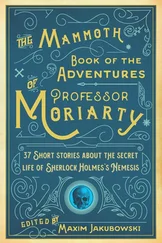Jon Lewis - The Mammoth Book of Conspiracies
Здесь есть возможность читать онлайн «Jon Lewis - The Mammoth Book of Conspiracies» весь текст электронной книги совершенно бесплатно (целиком полную версию без сокращений). В некоторых случаях можно слушать аудио, скачать через торрент в формате fb2 и присутствует краткое содержание. Город: London, Год выпуска: 2012, ISBN: 2012, Издательство: Robinson, Жанр: Прочая документальная литература, на английском языке. Описание произведения, (предисловие) а так же отзывы посетителей доступны на портале библиотеки ЛибКат.
- Название:The Mammoth Book of Conspiracies
- Автор:
- Издательство:Robinson
- Жанр:
- Год:2012
- Город:London
- ISBN:978-1-84901-363-5
- Рейтинг книги:3 / 5. Голосов: 1
-
Избранное:Добавить в избранное
- Отзывы:
-
Ваша оценка:
- 60
- 1
- 2
- 3
- 4
- 5
The Mammoth Book of Conspiracies: краткое содержание, описание и аннотация
Предлагаем к чтению аннотацию, описание, краткое содержание или предисловие (зависит от того, что написал сам автор книги «The Mammoth Book of Conspiracies»). Если вы не нашли необходимую информацию о книге — напишите в комментариях, мы постараемся отыскать её.
Jon E. Lewis is a historian and writer, whose books on history and military history are sold worldwide. He is also the editor of many
anthologies, including the best-selling
.
The Mammoth Book of Conspiracies — читать онлайн бесплатно полную книгу (весь текст) целиком
Ниже представлен текст книги, разбитый по страницам. Система сохранения места последней прочитанной страницы, позволяет с удобством читать онлайн бесплатно книгу «The Mammoth Book of Conspiracies», без необходимости каждый раз заново искать на чём Вы остановились. Поставьте закладку, и сможете в любой момент перейти на страницу, на которой закончили чтение.
Интервал:
Закладка:
Agimet the Jew, who lived at Geneva and was arrested at Châtel, was there put to the torture a little and then he was released from it. And after a long time, having been subjected again to torture a little, he confessed in the presence of a great many trustworthy persons, who are later mentioned. To begin with it is clear that at the Lent just passed Pultus Clesis de Ranz had sent this very Jew to Venice to buy silks and other things for him. When this came to the notice of Rabbi Peyret, a Jew of Chambery who was a teacher of their law, he sent for this Agimet, for whom he had searched, and when he had come before him he said: “We have been informed that you are going to Venice to buy silk and other wares. Here I am giving you a little package of half a span in size which contains some prepared poison and venom in a thin, sewed leather-bag. Distribute it among the wells, cisterns, and springs about Venice and the other places to which you go, in order to poison the people who use the water of the aforesaid wells that will have been poisoned by you, namely, the wells in which the poison will have been placed.”
Agimet took this package full of poison and carried it with him to Venice, and when he came there he threw and scattered a portion of it into the well or cistern of fresh water which was there near the German House, in order to poison the people who use the water of that cistern. And he says that this is the only cistern of sweet water in the city. He also says that the mentioned Rabbi Peyret promised to give him whatever he wanted for his troubles in this business. Of his own accord Agimet confessed further that after this had been done he left at once in order that he should not be captured by the citizens or others, and that he went personally to Calabria and Apulia and threw the above mentioned poison into many wells. He confesses also that he put some of this same poison in the well of the streets of the city of Ballet.
He confesses further that he put some of this poison into the public fountain of the city of Toulouse and in the wells that are near the [Mediterranean] sea. Asked if at the time that he scattered the venom and poisoned the wells, above mentioned, any people had died, he said that he did not know inasmuch as he had left everyone of the above mentioned places in a hurry. Asked if any of the Jews of those places were guilty in the above mentioned matter, he answered that he did not know. And now by all that which is contained in the five books of Moses and the scroll of the Jews, he declared that this was true, and that he was in no wise lying, no matter what might happen to him.
CAGOULE
“La Cagoule” was the press nickname for Organisation Secrete de l’Action Revolutionnaire Nationale (Secret Organization of National Revolutionary Action), a French fascist organization active in the thirties. Under its leader Eugene Deloncle, La Cagoule sought to overthrow the Third Republic with a campaign of assassination and terror. Some Cagoulards borrowed the Ku Klux Klan habit of wearing a “cagoule” or hood to conceal their identity, though the leadership were well known in French society, and included Eugène Schueller, founder of the French cosmetics company L’Oréal, whose HQ proved handy for Cagoule meetings. (The firm’s connection with French fascism did not end with Schueller; Cagoulards Jacques Correze and Jean Filliol, among others, enjoyed prestigious posts as L’Oréal executives post-war.) From its foundation in 1935, Cagoule recruited heavily from other French far-right groups, and its membership, which topped 150,000, was organized into a military structure of armed cells, with guns and explosives being shipped in from the fascist regimes of Spain and Italy, or stolen by Cagoulards in the French military. Politically, La Cagoule shared common ground with the Synarchymovement. In September 1937, La Cagoule blew up industrial employers’ buildings in Paris with the intention of pinning the blame on the Communists, and two months later prepared for the overthrow of the Third Republic, intending to place Marshal Petain as chief of state. When Petain refused to participate in the plot, they chose instead Louis Franchet d’Esperay. By now, however, La Cagoule had been heavily infiltrated by the police, and the Interior Ministry ordered the arrest of seventy leading Cagoulards, among them Deloncle. A search of La Cagoule’s arms dumps revealed 2 tons of explosives, 500 machine guns and several anti-tank guns. Stripped of leadership and arms, La Cagoule fell apart, though numerous Cagoulards later collaborated with the Nazi regime in Occupied France and its puppet state in Vichy. A minority of Cagoulards took the opposite path and joined the Resistance or De Gaulle’s Free French Army.

Michael Bar-Zohar, Bitter Scent: The Case of L’Oréal, The Nazis, and the Arab Boycott , 1996
FIDEL CASTRO
For years Fidel Alejandro Castro Ruz complained about CIA plots to kill him. For years the CIA denied doing anything so improper. As it turned out, the Bearded One was right. The CIA had Castro in its crosshairs for a decade or more.
Born in 1926, Castro led the 1959 Cuban Revolution, which established a socialist state ninety miles off the coast of Florida. As Wayne Smith, former head of US Interests Section in Havana, once memorably put it, socialist Cuba’s effect on the capitalist US was that of “a full moon on a werewolf ”. Neither was Castro’s socialist makeover of Cuba exactly popular with the Mafia (which had interests in Havana’s casinos), or the supporters of the overthrown Fulgencio Batista. And so the CIA, the Mafia, the Batistas all started hatching schemes to rid Cuba of the hirsute leader. Initially the CIA’s plots centred on merely humiliating Castro; in the psy-op, “Good Times” postcards were to be dropped over Cuba showing a corpulent Castro living the high life (“should put even a Commie dictator in the proper perspective with the underprivileged masses” stated the authorizing memo); another plan called for an LSD-like drug to be sprayed in the air at the radio station Castro used for his speeches so he would start ranting nonsense. No less whacky, was an idea to dust the Cuban leader’s shoes with a depilatory powder so the hair on his beard would fall out.
When humiliating Castro failed, the CIA tried invading Cuba (the Bay of Pigs debacle) before settling on assassinating him. Most of CIA’s assassination plans were apparently drawn from a bad Bond novel, and included:
• Contaminating Castro’s cigars with botulin.
• Contaminating Castro’s drink with botulin.
• Popping poison pills into Castro’s food at his favourite restaurant, with a little help from the Mafia (including Santos Trafficante, Johnny Roselli and Sam Giancana—all incidentally contenders for killing John F. Kennedy).
• Contaminating Castro’s scuba-diving gear with tubercle bacilli, and his wetsuit with a skin-disfiguring fungus.
• Placing an eye-catching conch on the seabed off Cuba—Castro was a keen diver—that contained an explosive device, which would detonate on being lifted.
No less than eight separate plans were drawn up by the CIA between 1960 and 1965 for the final solution of the Castro problem, only one of which was rooted in reality. Rolando Cubela Seconde, a major in the Cuban army and head of Cuba’s International Federation of Students, handily contacted the CIA offering to do their job for them. (Cubela had form as an assassin; as a young student he’d murdered Antonio Blanci Rico, head of Batista’s secret police.) The CIA gave Cubela the code name AMLASH and a syringe disguised as a Paper Mate pen and told him to inject Black Leaf 40 (an insecticide) into Castro. Eventually, the CIA gave Cubela what he asked for: a Belgian FAL rifle so he could pot Castro from afar. Before Cubela could pull the trigger, however, he was arrested by Castro’s security service. With quite remarkable generosity, Castro asked the court for clemency on Cubela’s behalf, and the putative assassin was sentenced to jail instead of a firing squad. Cubela was released in 1979 and went to live in Spain.
Читать дальшеИнтервал:
Закладка:
Похожие книги на «The Mammoth Book of Conspiracies»
Представляем Вашему вниманию похожие книги на «The Mammoth Book of Conspiracies» списком для выбора. Мы отобрали схожую по названию и смыслу литературу в надежде предоставить читателям больше вариантов отыскать новые, интересные, ещё непрочитанные произведения.
Обсуждение, отзывы о книге «The Mammoth Book of Conspiracies» и просто собственные мнения читателей. Оставьте ваши комментарии, напишите, что Вы думаете о произведении, его смысле или главных героях. Укажите что конкретно понравилось, а что нет, и почему Вы так считаете.











